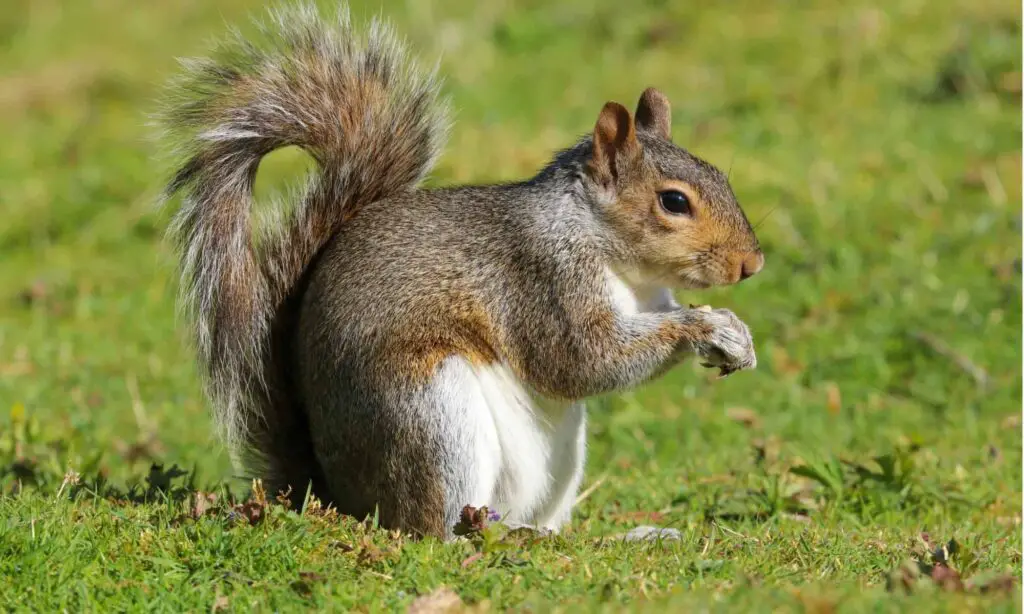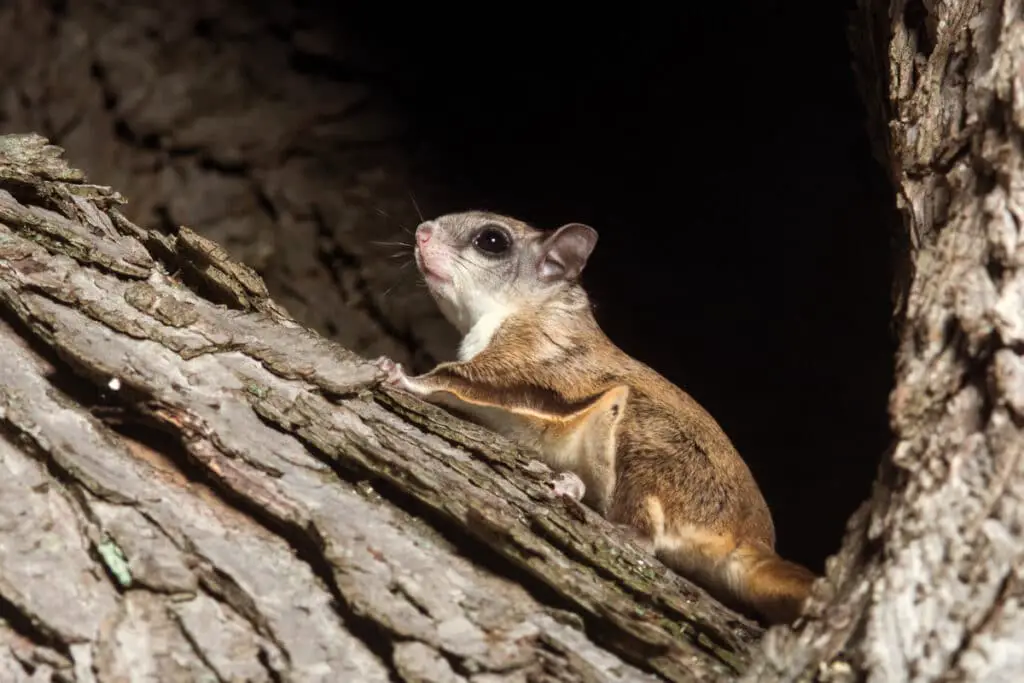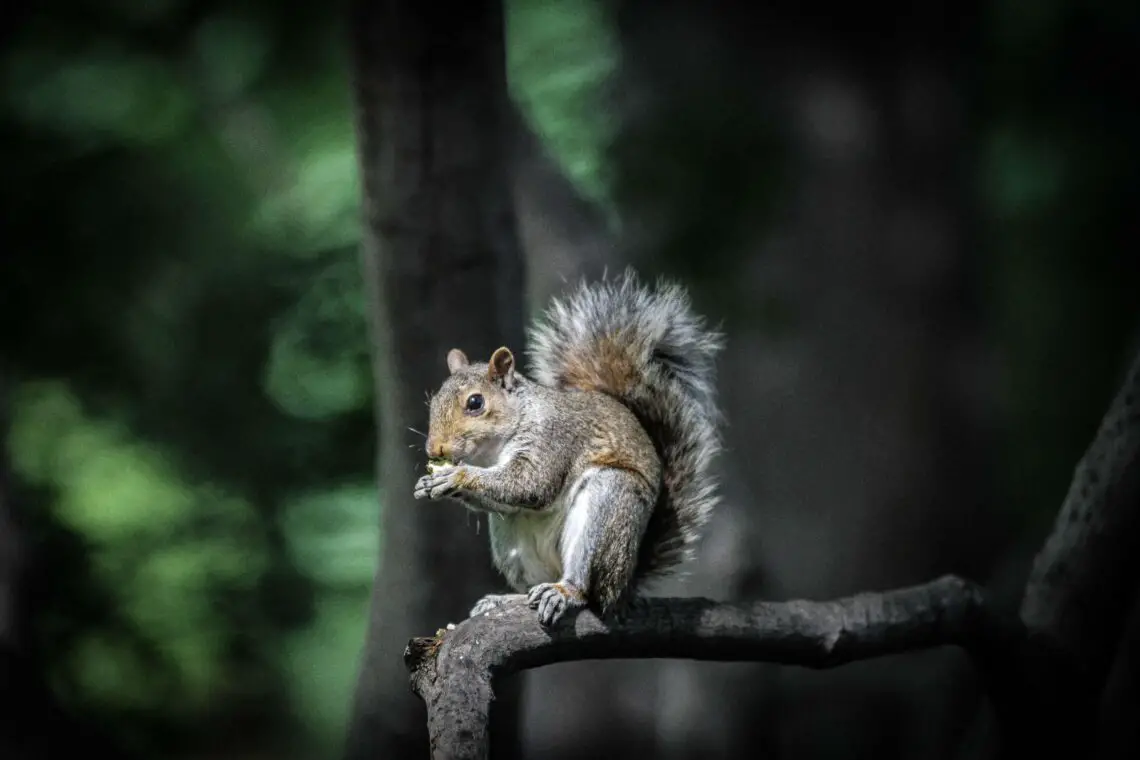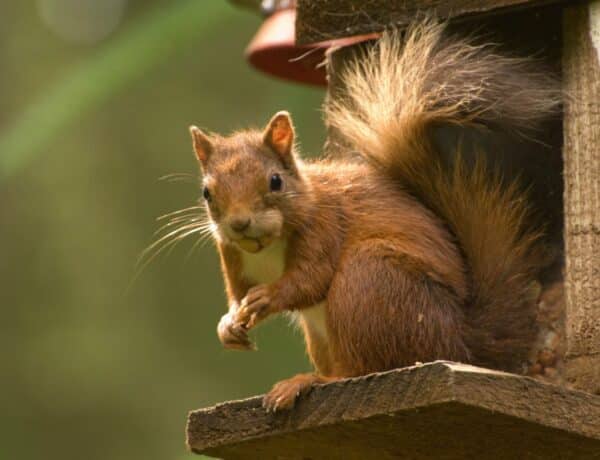Introduction
Are Squirrels Nocturnal: Squirrels, those agile and bushy-tailed creatures that dart through our parks, forests, and even urban neighborhoods, have long captivated our attention and curiosity. We watch them scurry up trees, make astonishing leaps from branch to branch, and bury their precious acorns with meticulous precision. To begin our exploration into the diurnal or nocturnal tendencies of squirrels feeders, we must first recognize the astounding diversity within the squirrel family, known as Sciuridae. This family encompasses a wide array of species, each with its own unique characteristics and habits. From the iconic gray squirrel commonly spotted in North American cities to the vibrant red squirrel of Eurasian forests, and from the oversized Malabar giant.
Squirrel of to the elusive flying squirrels with their extraordinary gliding abilities, the world of squirrels is a rich tapestry of adaptations and behaviors. While some animals are known for their strict nocturnal or diurnal lifestyles, squirrels exhibit a broad spectrum of activity patterns. The term “nocturnal” typically refers to animals that are primarily active during the night, while “diurnal” denotes those that are active during the day. However, many squirrels defy this simple dichotomy. Instead, they display a crepuscular lifestyle, which means they are most active during the twilight hours of dawn and dusk. This crepuscular behavior allows them to avoid the intense heat of midday while still making the most of available daylight.
As we delve deeper into the world of squirrels, we will uncover the fascinating intricacies of their daily routines, their remarkable adaptations to different environments, and the factors that influence their activity patterns. Whether you are an enthusiast who enjoys observing these acrobatic creatures in your backyard or a researcher seeking to understand the secrets of their behavior, this exploration into the diurnal and nocturnal tendencies of squirrels promises to shed light on the captivating lives of these iconic rodents.

Do squirrels walk around at night?
They are diurnal creatures, meaning they are active during the day and sleep at night, much like humans. However, they take several naps during the day to conserve energy. In terms of nocturnal activities, squirrels are not typically active at night.
Diurnal behavior is often associated with species that rely on visual cues to locate food and navigate their environment. Tree-dwelling squirrels, in particular, tend to be diurnal because daylight offers them a safer and more efficient way to move through the canopy.
Some squirrel species are crepuscular, which means they are most active during the twilight hours of dawn and dusk. This behavior allows them to avoid both the intense midday heat and the darkness of night when predators are more active. Crepuscular activity patterns are common among ground squirrels, as it a balance between foraging opportunities and safety from predators.
While true nocturnal squirrels are rare, there are some species that exhibit nocturnal tendencies. Flying squirrels, for instance, are known for their nighttime activity. They possess adaptations such as large eyes and a patagium (a membrane that enables gliding) that make them well-suited for navigating the dark forest canopy.
What time of night are squirrels most active?
Overall, Red squirrels exhibit a bimodal activity pattern for most of the year, with a peak in activity three or four hours after sunrise and another two or three hours prior to dusk – during the winter there is only a single peak (in the morning) and during mid-summer there may be three (morning, late afternoon and
Nocturnal Squirrels: Some squirrel species are truly nocturnal, which means they are primarily active during the night. Flying squirrels are a prime example of nocturnal squirrels. These remarkable rodents possess adaptations like large eyes for better night vision and a patagium (membrane) that allows them to glide effortlessly through the dark forest canopy.
Seasonal Variations: Squirrel activity patterns can vary seasonally. As the length of daylight changes throughout the year, squirrels may adjust their behavior accordingly. In the fall and winter months when daylight hours are shorter, some diurnal or crepuscular species may extend their activity into the night to maximize foraging opportunities during the limited daylight.
Environmental Factors: The local environment plays a significant role in determining when squirrels are most active at night. For instance, urban squirrels may exhibit more nocturnal tendencies due to reduced human activity and potential access to artificial light sources. In contrast, squirrels in rural or natural habitats may adhere more closely to their crepuscular or diurnal patterns.
Are squirrels aggressive?
No squirrel species is aggressive by nature. However, they are wild animals and if they feel threatened by you or another animal, they may bite as a defense mechanism. Even domesticated pets attack if they feel unsafe. As a rule of thumb, you should know not to try and pick up wild animals, including squirrels.
Squirrel species can differ significantly in their behavior and temperament. For example, the Eastern gray squirrel commonly found in North America, is generally more adaptable and less aggressive towards humans compared to the smaller and more territorial red squirrel (Sciurus vulgaris) in Europe. Ground squirrels, such as the prairie dog, are known to be more territorial and can exhibit aggressive behavior towards members of their own species or perceived threats.
Aggression in squirrels often stems from the need to defend their territories or valuable resources, such as food caches. Squirrels are known to chase away intruders, including other squirrels or birds, from their territory or feeding areas. During the breeding season, male squirrels may become more aggressive as they compete for the attention of females.
Squirrels may display aggression as a means of self-defense when they feel threatened. They may hiss, chitter, or even bite if they perceive a person or animal as a potential danger. Male squirrels can become territorial and aggressive when pursuing a mate. This competition for breeding rights can result in aggressive interactions between males.
Are squirrels intelligent?
How Is A Squirrel’s Intelligence Distinctive? All rodents are intelligent animals, but the squirrel crowns the list for intelligence. While a rat/mouse can outsmart and sometimes outmaneuver a pursuing human, squirrels’ quickness and intellect give them a lead over other predators and more giant creatures.
Squirrels are renowned for their ability to cache food, such as nuts and seeds, to sustain themselves through the lean winter months. This behavior requires them to have excellent spatial memory, as they bury their caches in various locations. Studies have shown that squirrels can the locations of hundreds of individual caches, relying on landmarks and even odor cues to retrieve their hidden treasures.
Squirrels are adaptable creatures that can adjust their behavior to changing circumstances. They have been observed solving complex problems, such as navigating obstacle courses to reach food rewards. This adaptability allows them to thrive in a variety of environments, from dense forests to urban landscapes.
While squirrels are not typically considered highly social animals, they exhibit social intelligence when necessary. In some cases, they may cooperate with other squirrels to warn of approaching predators or share information about food sources. Observations of squirrel communication suggest they can convey information through vocalizations and body language.
Can squirrels eat meat?
Do Squirrels Eat Meat. Yes, as we mentioned above, squirrels are omnivorous so it’s not unusual to spot them eating some type of meat. Most commonly, ground squirrels consume meat in their natural habitat. Their diet includes small snakes, lizards, mice, insects, etc.
The vast majority of a squirrel’s diet is made up of plant-based foods. This includes a wide variety of nuts (like acorns and walnuts), seeds, berries, fruits, fungi, and even tree bark and leaves. Their digestive system is adapted for processing plant matter, with a large cecum that aids in the fermentation of cellulose.
Squirrels are opportunistic feeders. While their primary diet is herbivorous, they may occasionally consume insects, small invertebrates, or bird eggs if the opportunity arises. This behavior is more common in certain squirrel species than others. In some cases, squirrels may raid bird nests to eat eggs or even capture and eat nestlings.
This behavior can have significant implications for local bird populations and is more commonly observed in species like the Eastern gray squirrel. Squirrels may consume animal matter to supplement their diet with protein. Insects and small invertebrates are potential protein sources for squirrels, especially during periods when plant-based foods are scarce or when they need extra energy, such as during the breeding season or when nursing young.
How rare is it to see a red squirrel?
How rare are red squirrels? In Britain, there are now an estimated 140,000 red squirrels (or Scours Vulgaris, meaning ‘common squirrel’). Their range is limited, with populations concentrated in parts of Wales, Northern England, the Isle of Wight and Scotland.
Red squirrels are naturally distributed across Eurasia, inhabiting regions from the British Isles and Scandinavia in the west to Siberia in the east. They are not typically found in North America, where the Eastern gray squirrel is more common.
In parts of the British Isles, the red squirrel has faced competition from the introduced Eastern gray squirrel. Gray squirrels are larger and can outcompete red squirrels for resources, leading to a decline in red squirrel populations in these areas.
Red squirrels are susceptible to a deadly disease called squirrelpox, which is carried by gray squirrels. Gray squirrels are often asymptomatic carriers, but when they come into contact with red squirrels, the virus can be transmitted and lead to fatalities among red squirrel populations.
Are squirrels related to rats?
They are rodents and close cousins to other rodent species such as rats and mice. They share similar rodent characteristics such as sharp teeth which continually grow, head shape and size, ear shape and other characteristics.
Squirrels belong to the family Sciuridae, which includes tree squirrels, ground squirrels, chipmunks, and flying squirrels. Within this family, there is a wide diversity of species adapted to various ecological niches. Rats, on the other hand, belong to the family Muridae, which includes a broader range of species, including true rats (e.g., Norway rats and black rats), mice, and other small rodents.
Squirrels are typically characterized by their long bushy tails, which they use for balance and communication, and their strong hind limbs adapted for leaping and climbing. They have a more streamlined and agile appearance, often with a slender body shape. Rats, on the other hand, tend to have shorter, scaly tails, and a more robust, cylindrical body shape. They are adapted for gnawing and burrowing rather than climbing trees.
Squirrels are known for their arboreal (tree-dwelling) lifestyle and are often seen in trees, where they forage for nuts, seeds, and fruits. They are agile climbers and use their tails for balance while navigating branches. Rats are typically ground-dwelling rodents and are often associated with urban environments, sewers, and burrows. They are opportunistic omnivores, feeding on a wide range of foods, including grains, garbage, and small animals.
What animal is running on my roof at night?
Usually, it is roof rats or mice but squirrels are common animals that run on roofs. One thing that could have attracted the squirrel to your roof is a bird feeder. Squirrels love birdseed, so they can easily be drawn to a bird feeder. Other common animals that run on roofs are raccoons and rats.
Squirrels: Squirrels are known for their agility and ability to climb. They often use trees as highways, and it’s not uncommon for them to traverse from trees to rooftops, especially if they’re searching for shelter, food, or a safe place to raise their young. Their scurrying across rooftops can be quite noisy.
Raccoons: Raccoons are nocturnal animals that can be notorious for venturing onto roofs. They are excellent climbers and may use your roof as a pathway to find food, water, or shelter. Raccoons are larger than squirrels, so their movements may create more noticeable sounds.
Birds: Birds can create a surprising amount of noise on roofs, especially during the breeding season. Pigeons and crows are known to roost on buildings and can make a significant racket, particularly in the early morning or late evening.
Rats and Mice: Rodents like rats and mice are agile climbers and may access roofs through trees, utility lines, or other means. They can make scratching or scurrying sounds in ceilings and attics, which may be mistaken for sounds coming from the roof.

Conclusion
Whether squirrels are nocturnal or not is not a straightforward one. Instead, it leads us into the intricate world of these remarkable creatures and their varied adaptations to different environments and squirrels habitats lifestyles. While some squirrel species may exhibit predominantly diurnal or nocturnal behavior, many fall into the crepuscular category, being most active during the transitional periods of dawn and dusk. The diversity within the squirrel family, Sciuridae, is a testament to the adaptability and resilience of these small mammals. From the bustling gray squirrels that thrive in urban landscapes to the elusive flying squirrels that gracefully glide through dense forests, each species has evolved to exploit specific niches in their ecosystems.
Factors such as habitat, predation pressures, food availability, and competition with other species play pivotal roles in shaping a squirrel’s activity patterns. For instance, tree-dwelling squirrels often exhibit more diurnal behavior, as they can navigate the canopy with relative safety during the day, while ground-dwelling squirrels may favor the cover of night to avoid predators. Moreover, the seasonal variations in light and temperature can influence a squirrel’s daily routine. As winter approaches and daylight hours shorten, some squirrels may become more diurnal to maximize their foraging opportunities when it’s light and warmer.
Conversely, in the scorching heat of summer, they may opt for dawn and dusk to avoid extreme temperatures. Our understanding of squirrel behavior continues to evolve as researchers delve deeper into their habits and preferences. With advancements in technology, such as GPS tracking and remote camera systems, we are gaining unprecedented insights into the lives of these charismatic creatures. Whether squirrels are nocturnal or not serves as a reminder of the complexity and diversity of the natural world. Squirrels, in their various species and adaptations, remind us that nature’s solutions to survival challenges are diverse and dynamic, allowing these creatures to thrive in a wide range of environments.





No Comments